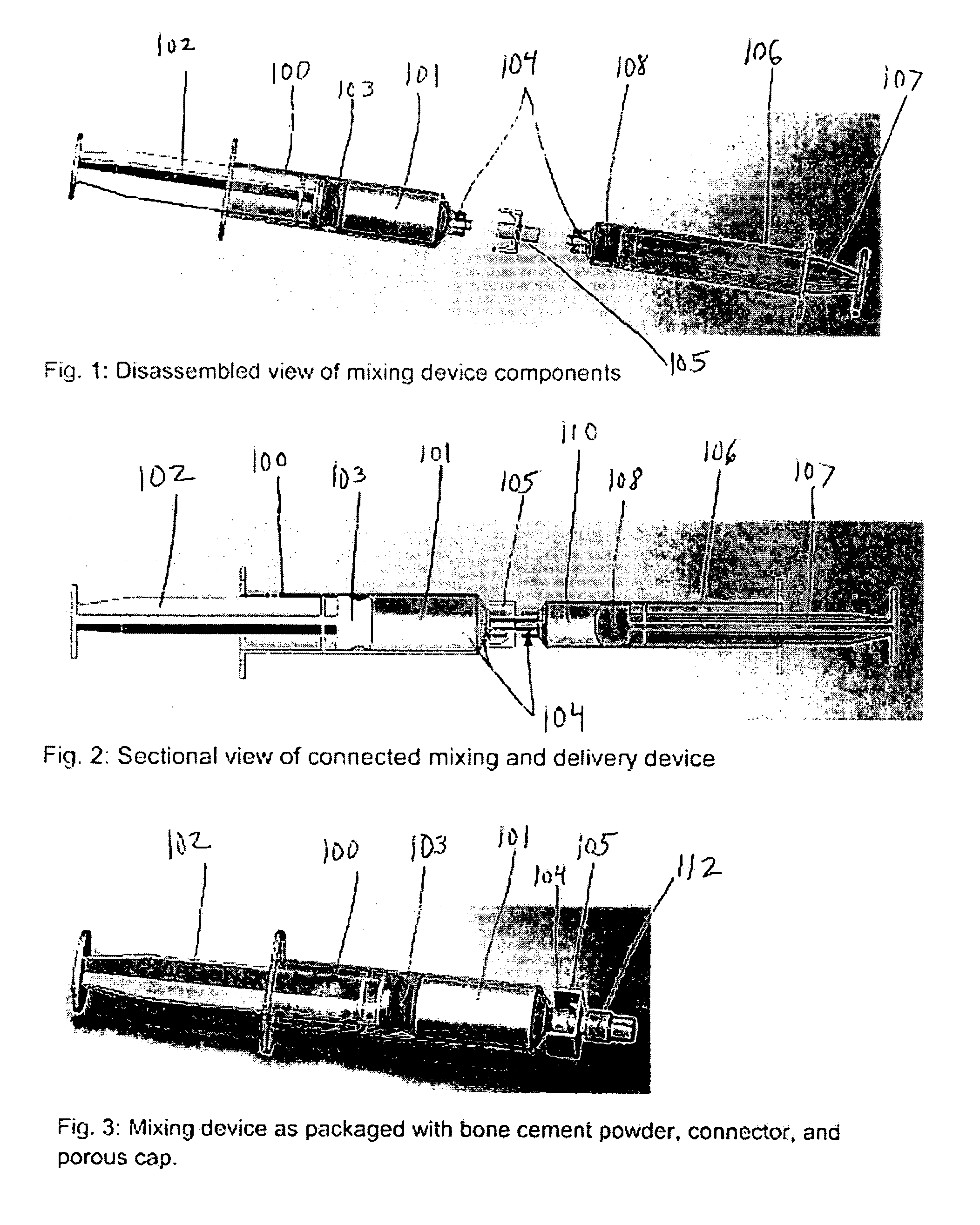Bone cement mixing and delivery system and methods of use thereof
a technology of bone cement and mixing device, which is applied in the direction of osteosynthesis device, transportation and packaging, prosthesis, etc., can solve the problems of difficult to achieve uniformity, messy and time-consuming transfer step, and open mixing and transfer step also present contamination risk, so as to reduce contamination risk and preparation time, improve cement injectability, and eliminate open mixing and transfer steps
- Summary
- Abstract
- Description
- Claims
- Application Information
AI Technical Summary
Benefits of technology
Problems solved by technology
Method used
Image
Examples
example 1
[0037]In order to determine the optimum compaction for a calcium phosphate powder, fifteen 20 mL mixing devices (syringes) with porous caps were each filled with 6.0 grams of calcium phosphate. The plungers were inserted into the barrel and compressed using a uniaxial testing machine until a given powder density was achieved. Three syringes were compressed to each of the following densities; 0.75, 0.86, 1.0, 1.1, 1.2 g / cc. Syringes were then tested by hydrating with 3.0 cc of saline using a 10 mL syringe and mixed by passing the powder and saline back and forth between the syringes until a smooth paste was achieved. The number of passes, or strokes, required to achieve complete mixing was recorded and averaged for each density. The results are shown in FIG. 4. A powder density of 1.0 g / cc was found to be optimal for this calcium phosphate.
example 2
[0038]To demonstrate the ability of the present device and its method of use to simplify preparation and to enhance injectability of a conventional calcium phosphate cement (CPC) the following study was performed.
[0039]Two CPC precursors; an amorphous calcium phosphate (ACP) (with Ca / P<1.5) and dicalcium phosphate dihydrate (DCPD) seeded with apatite (10-25% w / w) were prepared using a low temperature double decomposition technique. The two powders were mixed at a 1:1 ratio and milled in a high-energy ball mill for 3 hours. The resulting powder was filled into a syringe and connected to a second syringe filled with saline by means of a luer connector. The saline was injected into the powder at a liquid to powder (L / P) ratio of 0.5:1 and the mixture was then passed back-and-forth between the syringes until a uniform paste was formed (approximately 5 passes). The same cement mixed (with the same L / P) in a bowl with a spatula and then transferred into a syringe was used as a control. Th...
PUM
 Login to View More
Login to View More Abstract
Description
Claims
Application Information
 Login to View More
Login to View More - R&D
- Intellectual Property
- Life Sciences
- Materials
- Tech Scout
- Unparalleled Data Quality
- Higher Quality Content
- 60% Fewer Hallucinations
Browse by: Latest US Patents, China's latest patents, Technical Efficacy Thesaurus, Application Domain, Technology Topic, Popular Technical Reports.
© 2025 PatSnap. All rights reserved.Legal|Privacy policy|Modern Slavery Act Transparency Statement|Sitemap|About US| Contact US: help@patsnap.com



